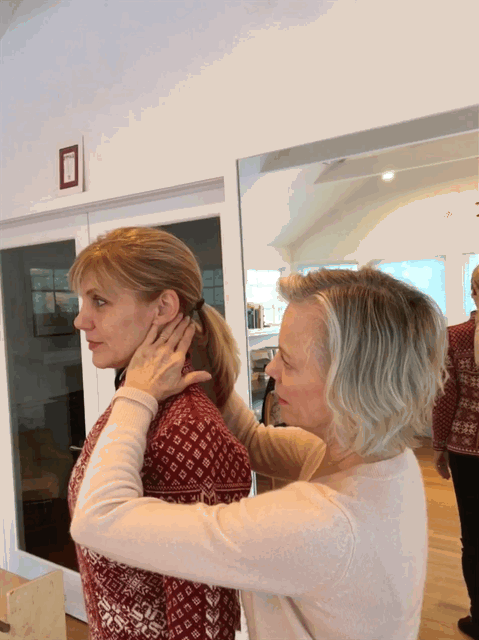
When you are working on arm styling, do you singularly focus on your arms?
Although this seems logical, anatomically we move our arms from our back, closer to our spines.
Our body architecture defines how we optimally move in space Yet our working concept of this is gradually overtaken by the familiarity of our habits – compression and tension. We often divide our spines into two entities; our neck and the rest of the spine. Our spine is a flexible and stable multi jointed structure of which the neck is one part.
Tight neck muscles increase the possibility of pain in the shoulder joint. It is the important reason that I help students recognize that the organization of the skeletal head/neck/spine relationship is the key to a well functioning muscular system.
Here is a simple illustration of our arm joint, the head of the humerus attached to a socket in the shoulder blade (scapula):

I noticed that when I explored arm styling, if I didn’t think about the connection to my back, my arms tended to pull my neck out of whack, which in turn cut off the alignment of the arm in the socket.
Similarly, that same arm joint appreciates a free neck to apply constructive feedback to the easeful movement of the arms in space.
Keep this in mind for your next practice session:
‘Map’ your shoulder joint – know where it is. (On your shoulder blade which sits on your back).
Lead your arm styling with your fingers and elbow.
Keep your neck free of tension.
If you want to find out more, book a lesson with me, either on Zoom or if you are in the NY/NJ area at my studio in Montclair, NJ. Please use my contact form, tell me about yourself and leave your availability. I will respond within 24 hours.
Happy Dancing! If you know other dancers who may benefit from reading my blog, please forward.












Comments
One tiny tweak that can make your posture stand out and win you competitions — No Comments